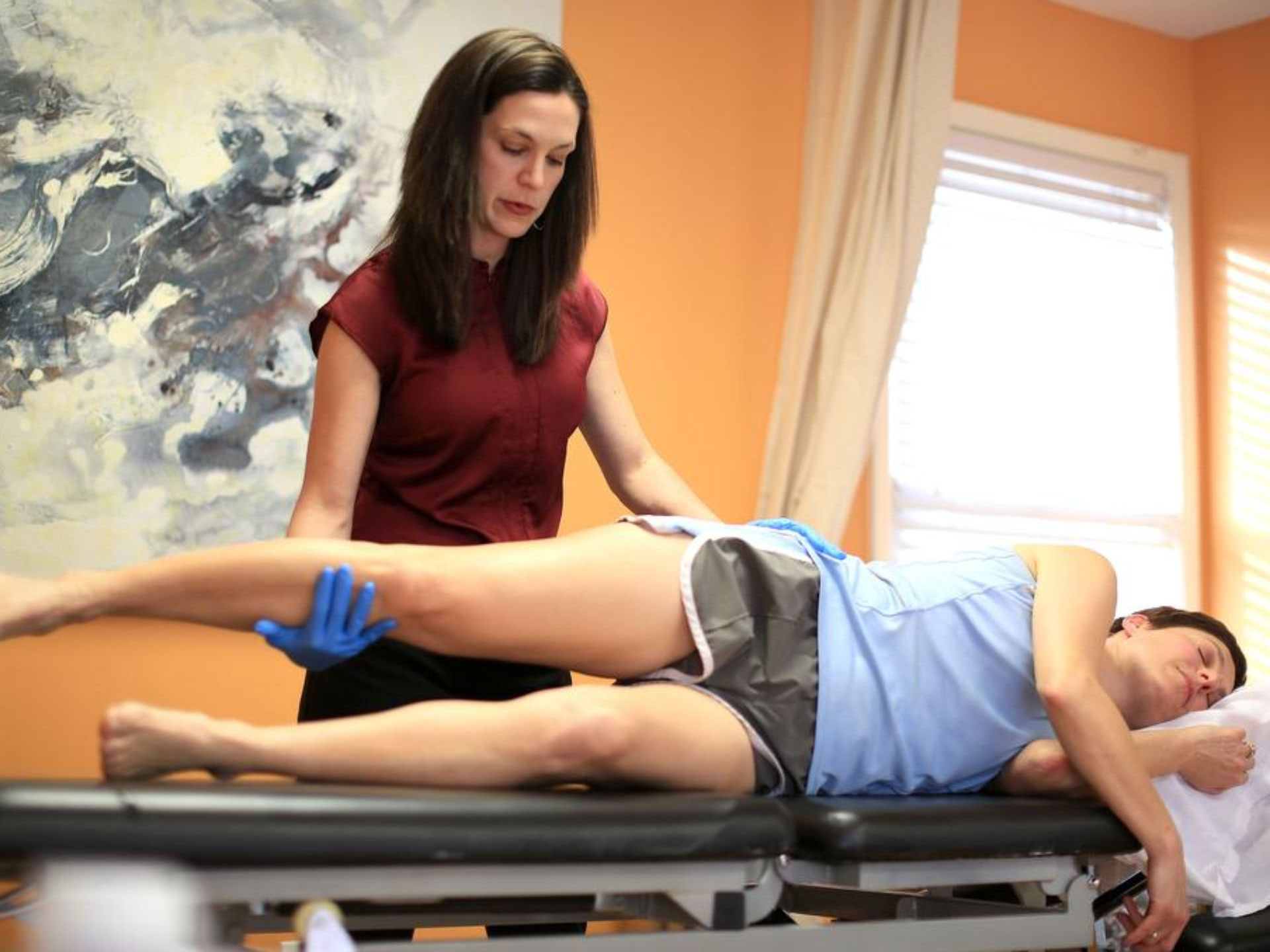General Orthopedic Evaluation
This is a 75-minute comprehensive evaluation and treatment session for anyone experiencing pain or limitation with normal everyday activities or postures. This session is also ideal for many different types of athletes such as road cyclists, mountain bikers, rock climbers, and those who attend various weight lifting gyms. Most orthopedic conditions of joint and muscle pain, spanning from mild to severe, are addressed during this session with treatments appropriate and comfortable for each client. Less general conditions such as foot/ankle pain, wrist/hand pain, headaches, and chronic post-surgical pain are also commonly seen. This session is meant for even nagging aches and pains experienced with little or no activity, such as discomfort with sleeping, sustained sitting or standing. In most cases, pain can be significantly decreased if not completely relieved for a more enjoyable daily life! Depending on your evaluation, the following services may be provided:
+ Full Body Structural Alignment Evaluation
This is a head to toe assessment of standing posture in regards to spinal alignment and how weight is dispersed throughout the different joints of the body. A thorough screen is performed looking at bony joint structure including checking femoral anteversion and retroversion, forefoot and hindfoot alignment, and global joint mobility to accurately assess how forces are distributed in the body during movement. Joints or soft tissues being forced to accept more load than what is appropriate during sustained postures or activity are the leading reasons for most symptoms and pain.
+ Muscle Strength and Flexibility Testing
This is a systematic assessment of muscle strength, stiffness, tone, and range of motion. An accurate measure of focal weaknesses allows understanding of more global soft tissue dysfunctions causing pain. This assessment also defines right and left sided stability within the body, and recognize imbalances causing injury. Accurate testing of these parameters is imperative for a concise and effective home exercise program and treatment plan.
+ Functional Movement Screening
These are a select set of evidence-based movement tests which allow right to left comparison of trunk and hip stability, and identify incorrect movement patterns responsible for symptoms with activity.
+ Core Strength Assessment
This assessment gives information as to what type of spinal movement strategies a person may use to keep stability during both prolonged postures, as well as with activity and/or sports. An accurate assessment of deep abdominal core function can identify compensations which may overload a specific part of the body or segment of the spine resulting in pain.
+ Trigger Point Release and Intramuscular Dry Needling
Intramuscular trigger point dry needling is a specific method of needle therapy to treat tight points within a muscle which may cause pain and limit mobility. Muscular trigger points can cause dysfunction locally at the muscle site, or refer pain to other points in the body. Dry needling is an evidence-based treatment which relieves abnormal muscle tightness or spasm, and can allow fairly immediate pain relief.
+ Instrument Assisted Soft Tissue Mobilization (IASTM)
Utilizing specially designed tools, this technique breaks up restricted fascia (the soft tissue which envelopes muscles) and mobilizes ligaments, and tendons to promote more rapid healing and pain relief.
+ Therapeutic Taping
Taping is a fantastic way to allow continued soft tissue treatment after leaving a treatment session. A variety of taping techniques have been strongly shown in medical research to relieve pain and increase function, while being worn comfortably throughout the day. Different kinds of tape are used to address specific conditions, and taping in general is appropriate for most orthopedic diagnoses including plantar fasciitis, Achilles tendon pain, shoulder pain, back pain, and IT band syndrome. Rock tape (™) , McConnell tape, and athletic tape techniques are the more common tapes utilized. Successful use of tape in the clinic can also be instructed for self application throughout the healing phase.
+ Posture and Movement Education for Everyday Activities
After evaluating a client’s posture, strength, flexibility, and balance, specific strategies can be determined to allow everyday movements and tasks to be performed with the least amount of stress to the body. Very clear education and handouts are used to convey the most important aspects to protecting areas that have previously been injured or generate pain. This empowers people to move more freely without fear of reinjury, and instills confidence to manage their own symptoms.
+ Corrective Home Exercise Program
Designing a custom home program is key for self-management of symptoms for clients between therapy sessions, and after symptoms are gone to decrease risk of future injury. This program is created based the the specific deficits found during the evaluation, and is kept very targeted so a client can get the most gains from a few simple exercises.
+ VacuTherapies™ Medical Cupping
Medical cupping utilizes suction to release soft tissue, scars and restricted fascia.This technique uses a vacuum to “separate” soft tissue layers and can be performed with a client resting, or performing functional movement. Medical cupping also has special applications for for pre- and post-surgery conditions, fibromyalgia, back pain, pain of the larger joints of the shoulder knee and hip, and painful conditions of the smaller joints of the hands and feet. Results are fast and very comfortable for clients, especially those people whose pain symptoms limit their tolerance for more aggressive muscle treatments.



